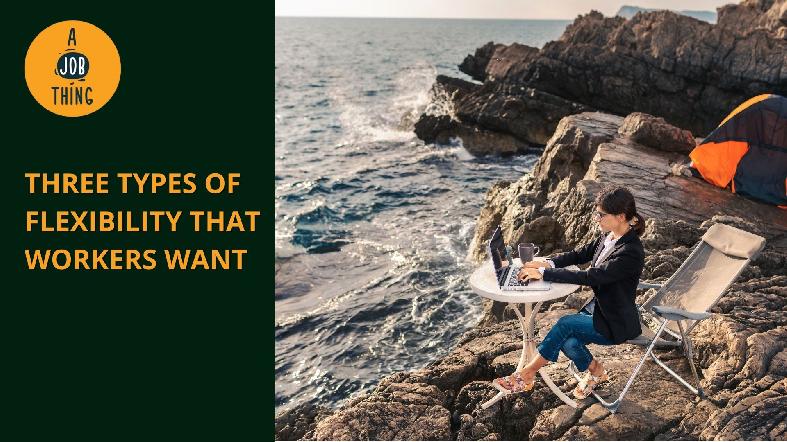
Three Types of Flexibility That Workers Want
Create Job Description Using AI
Write appealing job descriptions for any job opening to attract the most qualifield and suitable candidates. FOR FREE.
try now
The broad shift to remote work in 2020 disrupted long-held assumptions about where people can work. On the other hand, true flexibility involves much more than the ability to work from home, yet many businesses still fall short. A revised remote work policy is insufficient to meet the demands of the post-pandemic workforce. People are being pushed out of their jobs due to companies' restrictive views on the subject.
It's past time for businesses to rethink their approach to flexibility. Whether it's work-life balance, physical and mental wellness, or family care, today's employees need flexibility suited to their unique needs. As they collaborate with HR to build unique, innovative solutions for their direct reports, managers will play a crucial part in personalising flexibility for their team members.
The biggest reason employees return to work after taking a break is workplace flexibility. The need for flexibility is obvious, and leaders should think about these three aspects of flexibility if they genuinely wish to meet their employees' needs:
1. Where work can be done
This is the most ingrained part of how businesses regard flexibility. Having control over where work can be done was an essential aspect for nine out of ten workers who left the workforce and eventually returned, regardless of whether the job was in-person, remote, or hybrid.
As a result, executives should think about how to provide people true control over where they work. Hybrid work arrangements with set office days are deceptively flexible, as not all aspects of an in-person job must be completed in person.
For instance, a notable tech company implemented a "Retail Flex" model that allows in-store personnel to handle tech support and online sales while working remotely.
2. Where work can be done
This aspect of flexibility includes workers choosing their own working days and hours, providing adequate notice on schedule changes and overtime so that work stays predictable, and enabling people to take time off whenever necessary.
Three out of four workers (in-person, hybrid, or remote) said that having control over when they work is a crucial factor affecting their choice to accept their current job.
To keep employees satisfied, organisations must also search for ways to reset the 24/7 availability expectations and avoid enforcing rigid hours on staff. Organisations must trust employees to get the work done and leave them enough time and energy to take care of personal responsibilities and wellbeing.
A large automotive company implemented email blackout periods. They even disabled staff's ability to send and receive work emails on weekends and holidays.
3. How work can be done
The third aspect of flexibility means giving workers control over their everyday work activities, for instance, allowing employees to pace their own workload and empowering them to choose how to complete work tasks.
Three out of five in-person workers and four out of five remote or hybrid workers said that having control over how they complete their work is an essential reason for taking their current job.
A technology, media and telecommunications company rewards its staff for improving efficiency. When an employee automated a time-intensive job and saved four hours per week, the company encouraged the worker to use the time to take a longer lunch, foster deeper connections with coworkers, and work on a personally meaningful project.
It is time for a more comprehensive view of flexibility. If you want to gain a competitive advantage in attracting new talents, you must embrace the flexibility's where, when and how.
The business case is crystal clear: Offer true flexibility to keep and develop your workforce, or don't and watch your employees quit.
Source: McKinsey





